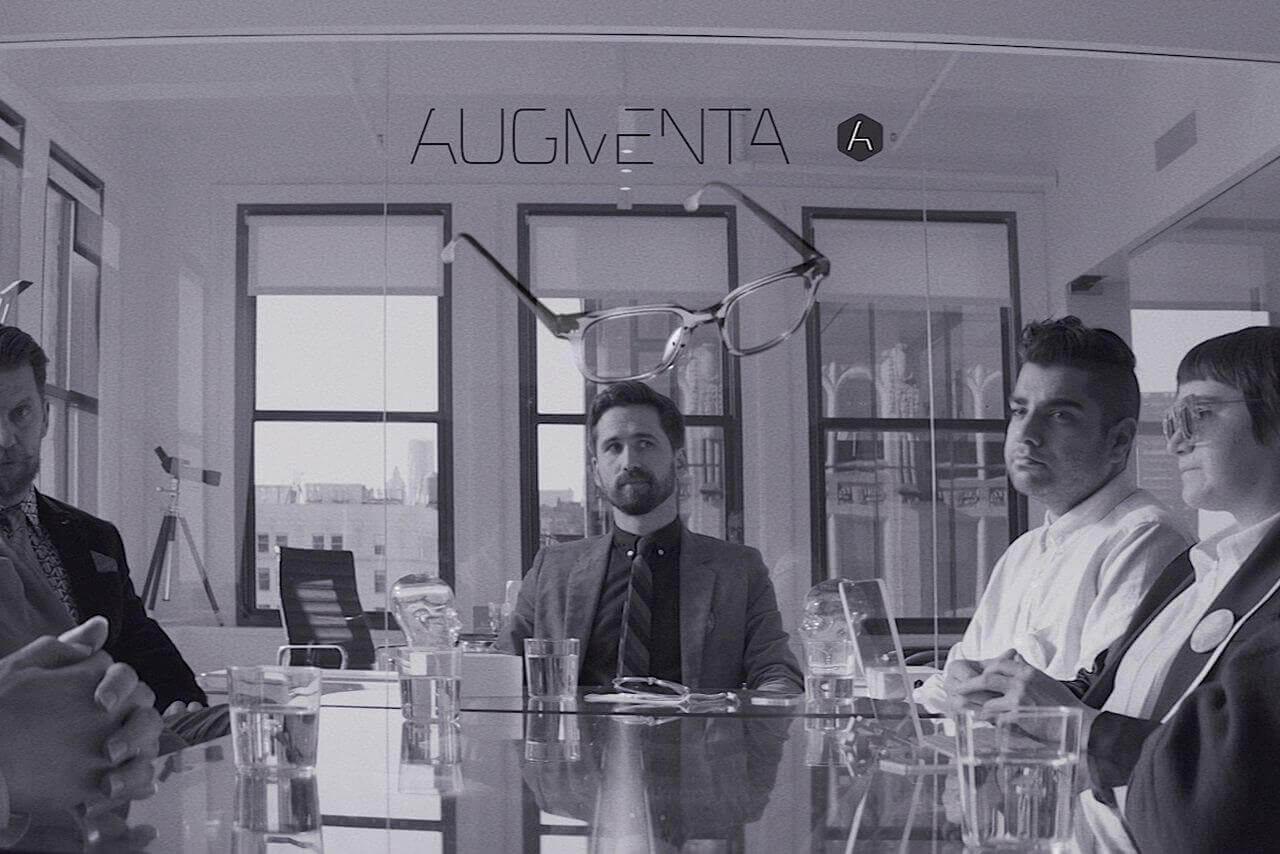Creative Control [2015] is the feature film debut of actor/writer/director Benjamin Dickinson who stars alongside Nora Zehetner, Dan Gill, and Alexia Rasmussen in a relevant tale of augmented reality and human flaws.
A Commercial Film. Right off the bat the quality of the production is realized as clean and concise with its rich black and white photography filling each frame with perfectly lit cinematography and precisely composed camera placement. Any given shot looks like it could’ve been taken from the latest techno-gadget commercial, or more accurately, any given shot looks like it’s a commercial for the augmented reality product the story revolves around. If Mr. Dickinson has dreams of directing commercials for any of Google’s future products, this is the magnum opus of calling cards. In all seriousness, however, it seems too consistent for it to simply be a new director proving he knows how to make something look good and rather comes across as a way of showcasing the perfectly involved technologically inclined world these characters live in. The phones and tablets all look like perfectly cut slabs of glass, the user interface for even the newest tech toy is beautiful and intuitive. Everything is perfectly placed, nice to look at, and easy to follow.
Beyond the LEDs. The plot itself is also easy to follow, and that can be seen as unfortunate with the number of terrific films that continue to surface revolving modern day communication, technology, and our daily lives. There’s nothing challenging about what this film is conveying, and there seems to be so much opportunity to have surprised the audience with something more cinematically compelling and thematically engrossing. The plot comes across as a film school graduate thesis, but it unfortunately never got fleshed out into something truly unique or with something to say in a truly unique way. It does what it does very well, and it’s a product to be proud of, but it’s all surface level and never dives deeper than the pretty looking GUI.
Always Augmented. What is particularly nice about the story is how it packages itself in a box about augmented reality by way of the latest technology when the characters involved have always been augmenting their own realities by other means all along. Whether by drugs and alcohol, spirituality and nature, or simply taking control of status or occupation, we as humans change the way we perceive or take advantage of our daily reality without even sending a text. The story is surely about losing ourselves in technology, living out dreams and desires in a virtual world rather than truly existing in the real world, but it touches on our own perceptions and flaws that have been around long before touch screens were placed in the pocket of every person old enough to wear pants.
Lack of Control. The performances are all well done, and the writing altogether is honest and believable. There are some genuinely funny moments throughout the film, and a particular standout scene is one involving the shooting of a commercial and the kind of creative control (or lack thereof) that exists in so many mediums. The effects throughout are streamlined and sexy, and there’s some fun use of color to conflict with the black and white cinematography that is a clever enough storytelling technique but one that proves the point made two paragraphs ago. This is a film that certainly showcases Mr. Dickinson’s writing and directing prowess with a story that’s relatable and relevant to the times, but it’s missing some kind of cinematic magic amongst the streamlined aesthetics and straightforward storytelling.
Pretty to look at and easy to grasp, this debut shows an example of perhaps too much control and not quite enough creativity.

